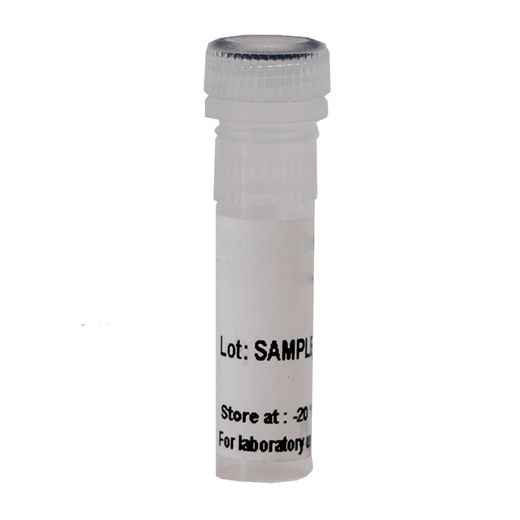
DELFIA Eu-N1-DTA Chelate Europium Labeling Reagent & Eu Standard, 2 mg






Loading...
Product information
Overview
DELFIA® Eu-N1-DTA Chelate is optimized for europium labeling of proteins and peptides for use in dissociation-enhanced time-resolved fluorometric assays.
The reagent is the Eu3+-chelate of N1-(p-iodoacetamindobenzyl)diethylenetriamine-N1,N2, N3, N3-tetraacetic acid. The dichlorotrianzinyl group reacts with free amino groups on the proteins and peptides, forming a stable, covalent bond.
The N1 chelates can be used in DELFIA® separation assays where the concentration of chelating agents is <
0.05 mM, pH >7, and the temperature is <38°C. They are suitable for highly sensitive end point measurements in separation based assays such those for detection of protein-protein binding and cell adhesion as well as for immunoassays. Dichlorotriazine activated (DTA) chelates, are suitable for labeling proteins, peptides, nucleic acids and small molecules containing at least one primary aliphatic amino group.
DELFIA® (dissociation-enhanced lanthanide fluorescence immunoassay) is a time-resolved fluorescence (TRF) intensity technology. Assays are designed to detect the presence of a compound or biomolecule using lanthanide chelate labeled reagents, separating unbound reagent using wash steps. DELFIA assays are flexible, compatible with a variety of plate readers, and, as this is a wash-based technology, compatible with most sample types. The technology is based on fluorescence of lanthanide chelates (Europium, Samarium, and Terbium). The fluorescence decay time of these lanthanide chelate labels is much longer than traditional fluorophores, allowing efficient use of temporal resolution for reduction of autofluorescent background. The large Stokes’ shift (difference between excitation and emission wavelengths) and the narrow emission peaks contribute to increasing signal-to-noise ratio. Sensitivity is further increased because of the dissociation-enhancement principle: the lanthanide chelate is dissociated and a new highly fluorescent chelate is formed into a protective micellar solution. DELFIA lanthanide chelates require this dissociation/enhancement step for fluorescence (induced by addition of DELFIA Enhancement solution, DELFIA Inducer, and DELFIA Enhancer as appropriate to the particular lanthanide chelate).
Specifications
| Application |
Labeling
|
|---|---|
| Automation Compatible |
Yes
|
| Brand |
DELFIA
|
| Detection Modality |
DELFIA
|
| Fluorophore |
Eu-N1-DTA
|
| Product Group |
Fluorescent Reagent
|
| Shipping Conditions |
Shipped in Blue Ice
|
| Technology |
TRF
|
| Unit Size |
2 mg
|
Resources
Are you looking for resources, click on the resource type to explore further.
DELFIA® immunoassays are particularly well suited for discovery of specific, high-affinity monoclonal antibodies (mAbs)...
DELFIA immunoassays are a superior alternative to traditional ELISAs
This guide provides an introduction to the DELFIA method, and to the labeling procedures involved.


How can we help you?
We are here to answer your questions.






























